I drove the new screen-obsessed Polestar 4 – and its lack of a rear windscreen isn't the only thing it should be remembered for
Strip away some of the tech gimmicks and this is a great EV

The Polestar 4 will forever be remembered as the car that broke the internet. Well, if you dwell in automotive circles it most certainly did, purely because this was a new EV that dared do away with the rear windscreen.
That was arguably not as much of a big deal as numerous social media posts and website articles made out, seeing as most vans and commercial vehicles have done without a rear windscreen for years, but this would be the first time the world has seen a passenger car without a slither of glass at the back.
Steve Potter, Exterior Design Manager at Polestar, explained to me that the divisive design decision was made for various reasons, citing improved airflow and aerodynamic efficiency, extra roominess for rear passengers. Perhaps more important, though, was the fact that the company had exciting new rear-view camera technology in its arsenal and it wasn’t afraid to use it.
Although arguably not as handsome as that Precept concept car upon which it is based, the new Polestar 4 still cuts an imposing figure on the road. The Swedish company insists it is an SUV coupé, but the low-slung nose, the enormous alloy wheels and windowless ‘fastback’ design are far more modern mash-up than they are traditional Sports Utility Vehicle fare.
Technology is also absolutely everywhere, from the digital rear-view mirror (a must when you can’t actually see out of the back), to the various displays and touchscreens inside, this is a car that will have fans of clean design salivating and campaigners for physical buttons and dials recoiling in horror.
Never look back
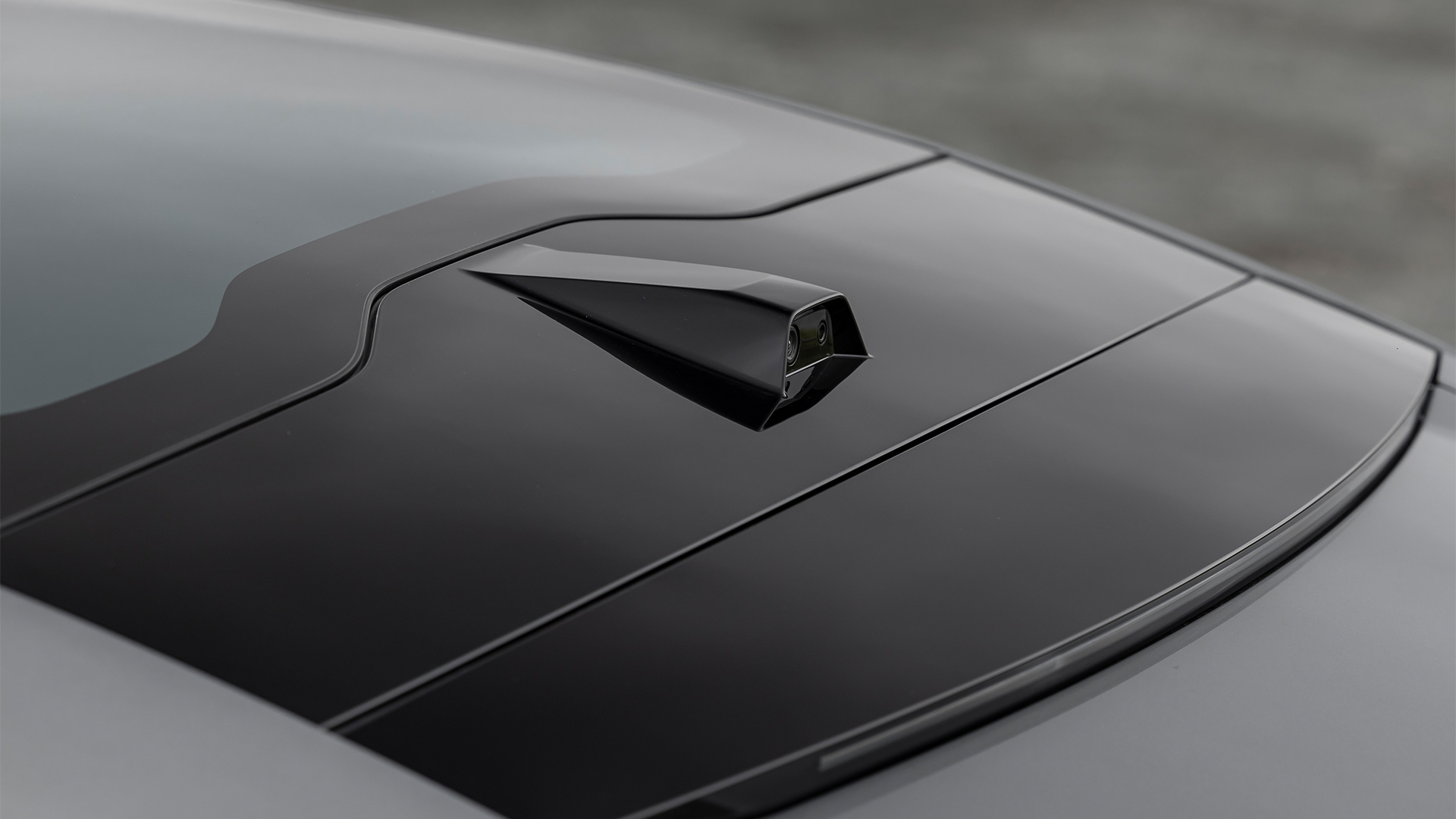
Let's tackle the elephant in the room first, because Polestar's decision to replace a standard mirror and large piece of glass with fancy camera technology is controversial.
Most local laws state that if a passenger vehicle has a rear windscreen, it must also sport a functioning mirror – but Polestar has got around this by completely blanking out the rear hatch. When viewed (and touched) in the flesh, this manifests itself in a slightly awkward oval of thin metal where a window should be.
Get daily insight, inspiration and deals in your inbox
Sign up for breaking news, reviews, opinion, top tech deals, and more.
That said, the fact that designers have been able to move the header rail so far back means the huge panoramic glass roof, which comes as standard, begins to almost wrap over the back of rear passengers, so there's no wanting for extra light in the cabin.
Should you be a vampire or simply not enjoy sunlight, said enormous panoramic roof can also be optioned with an electrochromic finish that means it can transform from transparent to opaque at the press of a button.
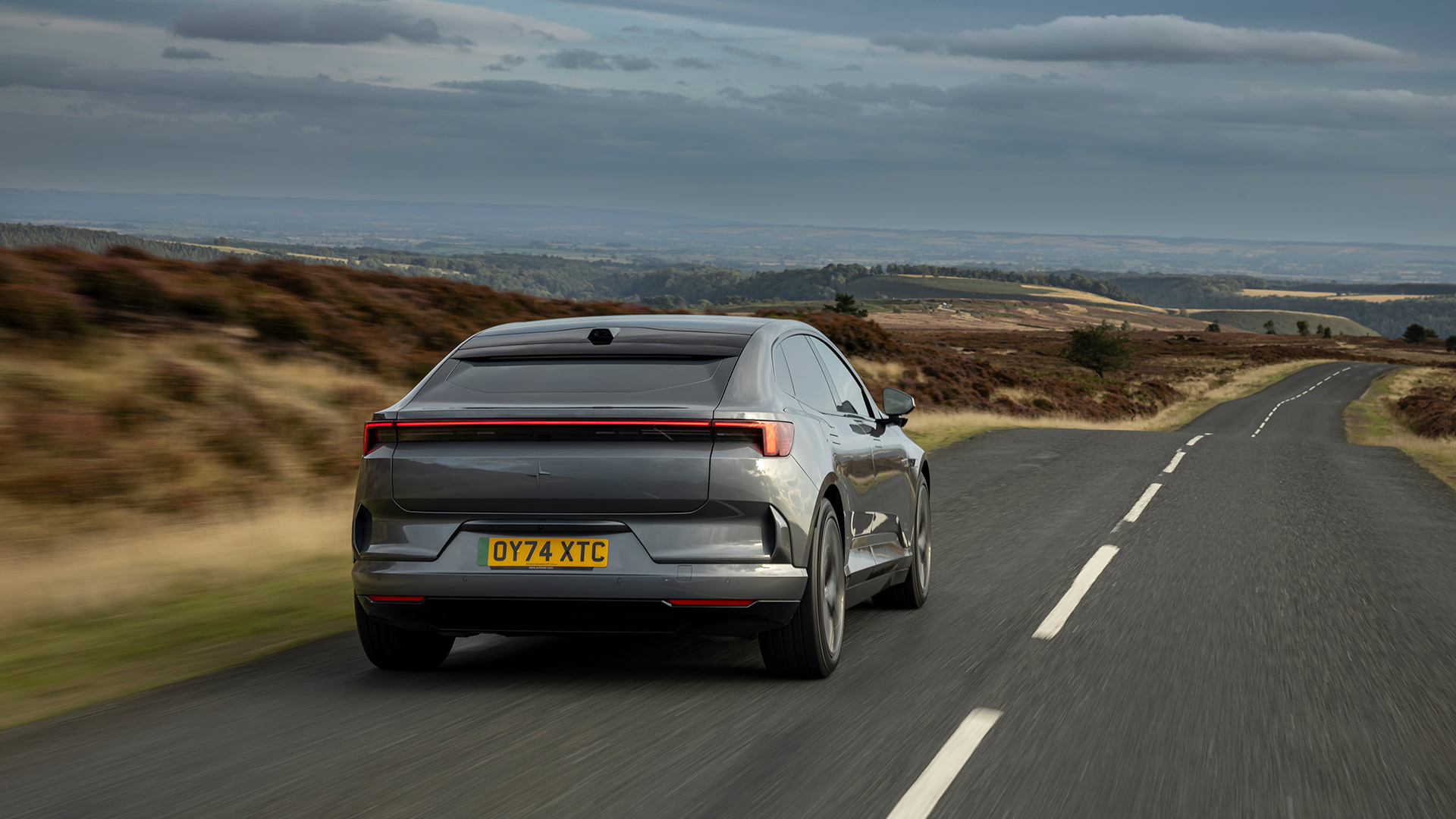
But back to the, erm, back, because the large slab of metal looks and feels slightly odd. Initially, I asked if it was a retractable spoiler, but was told it was merely a different metal alloy and part of the design. More the fool me.
Of course, this lack of rear windscreen means it’s a potential no-go for dogs and any other pets that might usually ride in the boot or trunk, as they’ll feel like they’ve been kidnapped by the Mob, and drivers have to rely solely on (another) high definition screen when manoeuvring.
It takes bit of getting used to, as the field of view from the live camera feed is so much wider than that of a standard glass mirror. It’s nice, in so much as you can see more and it’s excellent at night, but the brain really doesn’t agree with it.
Every time I habitually looked up at the mirror during the day spent driving, the giant high-definition display took me by surprise. It’s certainly crisp, but nowhere near as detailed as a piece of glass and there’s no way of adjusting the viewing angle simply by moving your head. That’s the parallax effect (or lack thereof), for science fans.
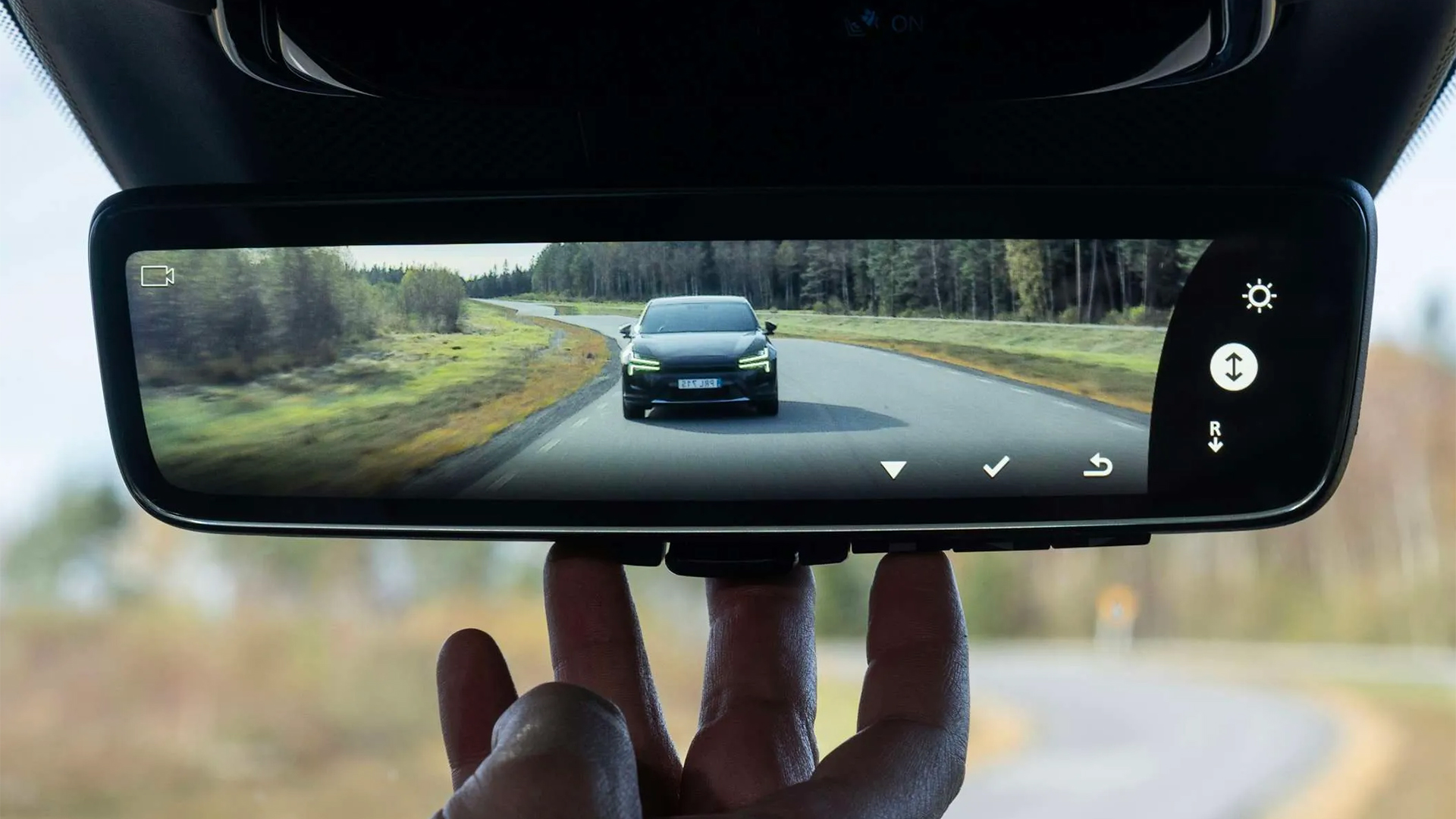
Jaguar Land Rover debuted its ClearSight digital Mirror in the Range Rover Evoque back in 2020 and I hated it just as much back then. But thankfully, that system could be turned off with a press of button and a piece of old-school glass returned in its place.
You can do the same in the Polestar 4 if you want to look your rear passengers in the eye, but all you'll see out of the back is a large section of black carpet that covers the inside of the rear stowage area.
There's also the issue of spectacles, as those wearing glasses to correct long-sightedness will find the rear-view screen is far too close and it will take a while for the image to come into focus, if it ever does.
Polestar says rain and adverse weather isn't an issue, though, as the camera housing is "designed to direct the airflow and keep water and grime away from the lenses".
I've not tested it in snow and ice, but seeing as Polestar is based in Gothenburg, Sweden, I expect they'll have thought of that.
Fortunately, all of this upheaval hasn’t been in vain, because headroom for rear passengers is excellent – space in the back seats feels positively cavernous. The trunk or boot is equally gargantuan and it certainly starts plenty of conversations at the public charging stalls.
Screen envy

In typical Polestar fashion, the interior oozes Scandi cool thanks to its clean surfaces and distinct lack of physical buttons messing the place up.
Unlike the Polestar 2 and 3, which receive a portrait-orientated infotainment system, the Polestar 4, which rides on basic underpinnings borrowed from parent company Geely (the Polestar 3 shares its platform with the Volvo EX90), gets a 15.4-inch landscape-oriented touchscreen.
Although it essentially looks the same, the user experience is simpler and more enjoyable than that of both the Polestar 3 and Volvo EX90. The icons appear larger, for a start, making them much easier to locate when driving and it’s possible to set shortcuts and favorites to the most-used functionality.
The main homepage also uses a dynamic tile system, so it’s possible to have the map running, with quadrants reserved for Spotify, vehicle functions and any other shortcuts you might want to pin.
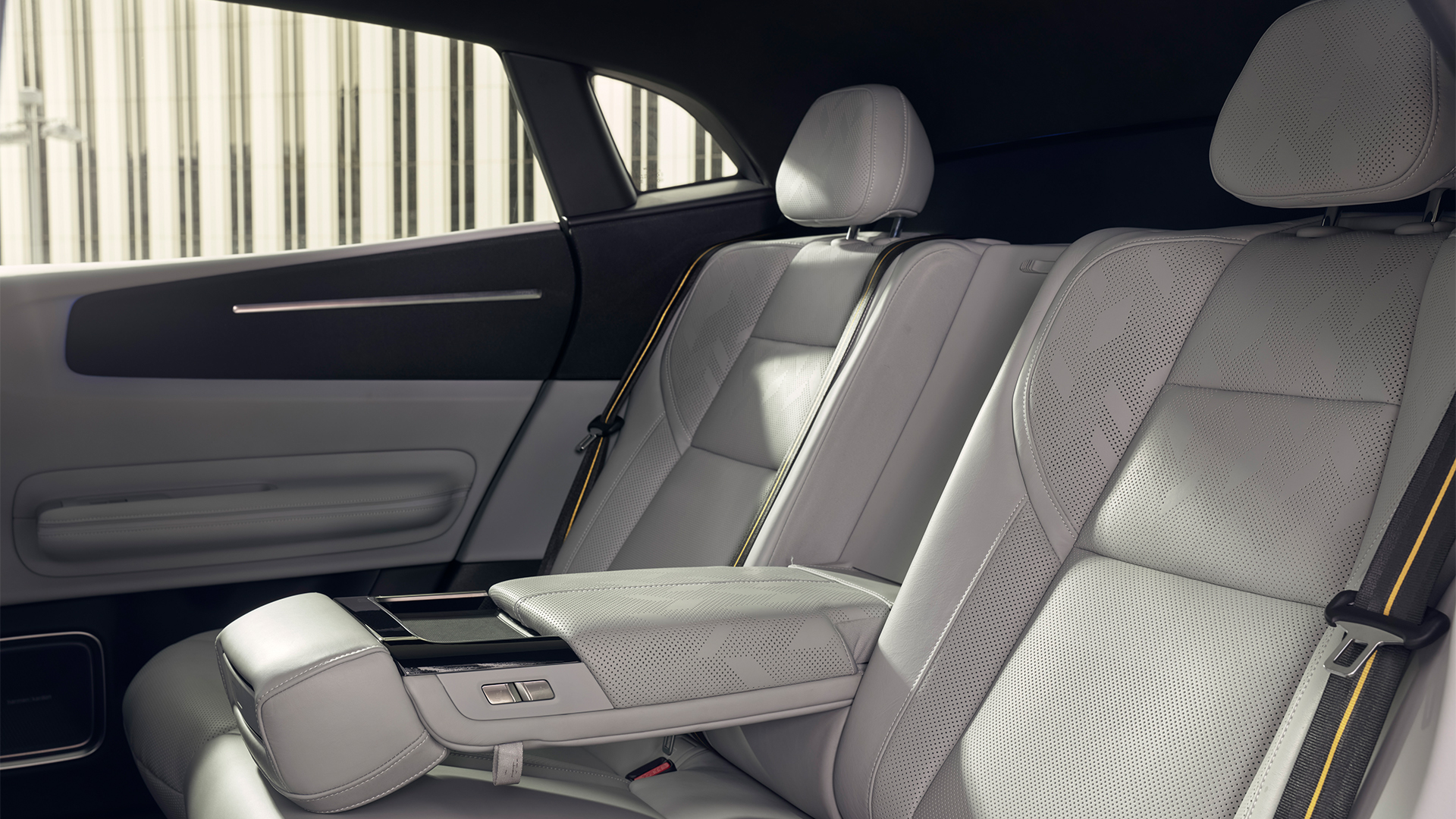
These sections aren't fixed, so it’s possible to make the map section larger by dragging it, for example, while a secondary none-touchscreen display behind the steering wheel deals with important things, such as speed, remaining range and smart cruise control functions.
However, far too much is still committed to this touchscreen display. To adjust the side mirrors, you’ll have to dive into a menu on the screen and then adjust them with buttons on the steering wheel. Controlling the air-con vents is a similar rigmarole, while even the glovebox is opened with a digital icon.
The Polestar 4, which runs Android Automotive as its main operating system, is much easier to live with in this regard than the Volvo EX30, as its menu system is less confusing to navigate and you don’t end up spiralling down a rabbit hole as much as you would, but it’s still a little clunky.
Perhaps the final kick in the teeth is that the in-cabin camera system, which tracks the driver’s eyes to make sure they're paying attention, has the cheek to beep and flash ‘pay attention to the road’ warnings when all you're really doing is trying to adjust the drive mode.
Premium feels

Polestar has recently jumped from being a one-car brand (if you discount the limited nature of the Polestar 1) to an all-EV line-up of three, with the promise of two more models coming very soon.
The $56,000/£59,990/AU$$81,500 Polestar 4 will be hugely important for the brand, seeing as it counts the likes of Tesla’s Model Y, the Porsche Macan EV and the Audi Q6 e-tron as key rivals.
It’s a lot of money to hand over, but then you are getting a lot of car. This is a physically sizeable EV, making the Polestar 2 look positively puny when parked next to it. It’s also plenty quick enough, even in the standard Long Range Single Motor Variant.
This car packs 272hp thanks to a 200kW motor, while a mammoth 100kWh battery means it is capable of clocking up a claimed 385-miles of range before it needs recharging. Despite a fairly average EV 0-62mph time of 7.1 seconds, it feels brisk enough and rides nicely, even on standard suspension.
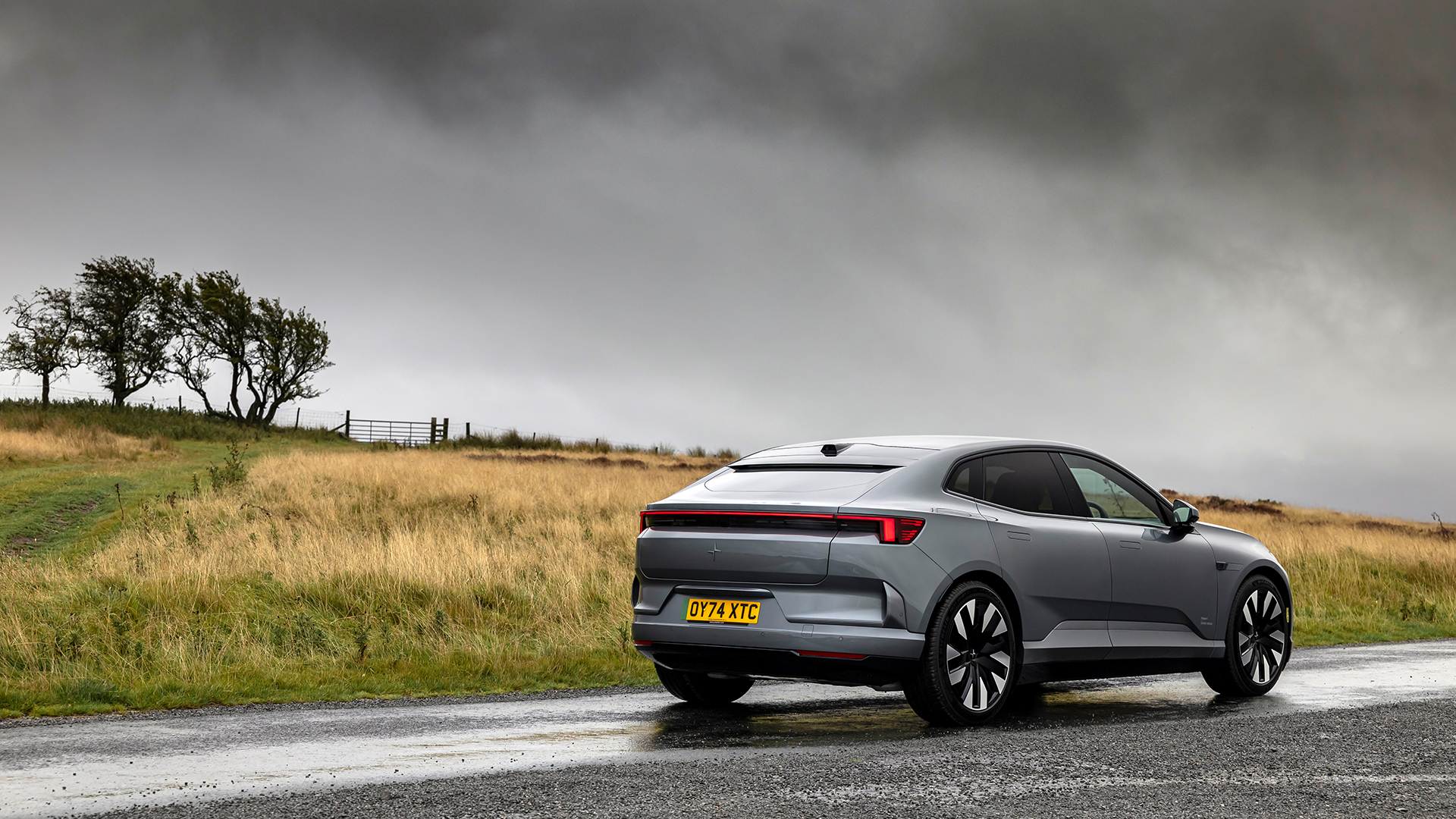
Hand over an extra $7,000/£7,000 and you can plump for the altogether more spritely Long range Dual Motor model, which develops 544hp and 686Nm of torque thanks to a motor driving each axle. Here, the 0-62mph sprint is dispatched in just 3.8 seconds.
Despite this, Polestar claims it can still manage 367-miles on a single charge from the same battery pack, but we’d argue all of the lead-foot action will quickly see range diminish.
The more performance-orientated model also rides on adaptive dampers, which makes the driving experience even more plush and irons out some of those imperfections found on the UK's abysmal roads.
Altogether, it’s a wonderful thing to drive – quiet, relaxed and packing plenty of performance, while offering a liveliness in the way it handles that sets Polestar apart form sister company Volvo.
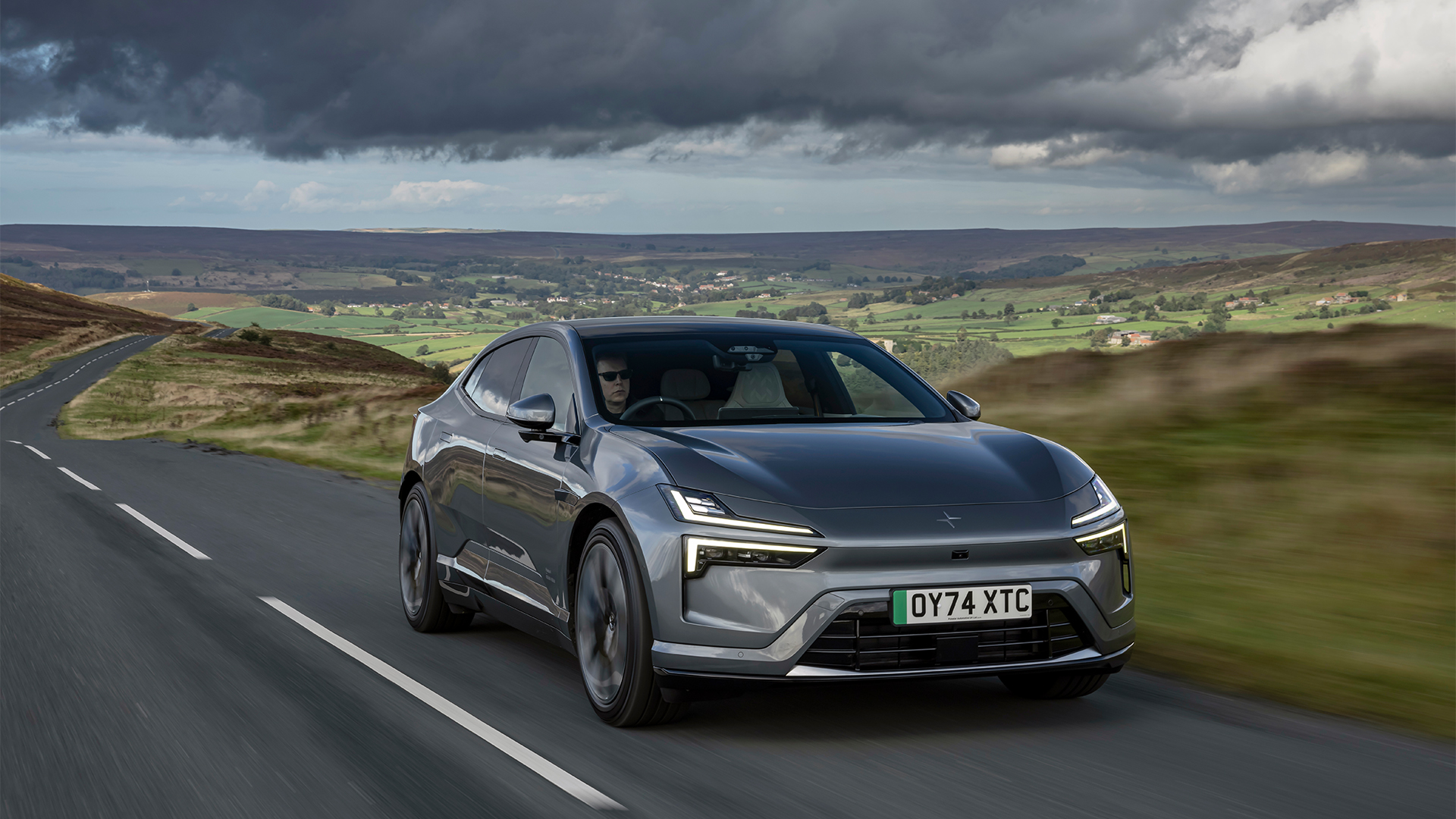
There’s also loads of room in the back for passengers, a large trunk or boot and another stowage space – or frunk – at the front end that’s big enough for soft bags.
Inside, it feels expensive, with beautiful materials covering the surfaces, a potent Harman Kardon sound system and the option to add the company’s LiDar-based safety system, which also takes care of advanced levels of autonomous driving.
But unlike Volvo, those cars specified with with LiDar won’t be ready until the technology itself is fully operational, which could be the middle of 2025.
It is clear Polestar is doing something different and its design language offers something fresh and exciting in a fairly homogenous market.
But whether or not the technology required for such radical styling will be as well received by the general public is yet to be decided.
you might also like

Leon has been navigating a world where automotive and tech collide for almost 20 years, reporting on everything from in-car entertainment to robotised manufacturing plants. Currently, EVs are the focus of his attentions, but give it a few years and it will be electric vertical take-off and landing craft. Outside of work hours, he can be found tinkering with distinctly analogue motorcycles, because electric motors are no replacement for an old Honda inline four.